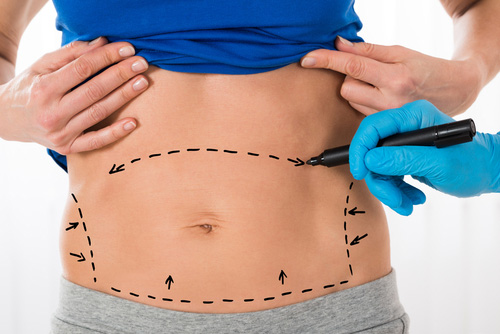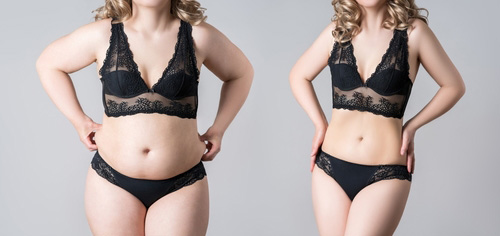Liposuction Surgery Cost Turkey Benefits Risks and Details

- Reasons For Liposuction
- Which parts of the body can liposuction be applied to?
- Liposuction in men and women, differences
- Liposuction Methods
- How is Liposuction Done?
- Liposuction Cost Turkey and Europe
- What Happens After Liposuction
- Side Effects and Risks of Liposuction
- Liposuction Without Surgery: Is That Possible?
During liposuction, a surgeon removes the body's own fat deposits. Read here on which zones this is possible and how much liposuction costs.
On social media, in glossy magazines – slim, fit people everywhere. Anyone who would also like to lose a few pounds but failed despite diet and exercise, for example in women with a congenital fat distribution disorder (lipoedema), liposuction (medically also called liposuction or aspiration lipectomy) can be the last resort tackle the problem areas.
Liposuction is one of the most common surgical procedures in Turkey. Many people not only find their love handles and the often associated orange skin (cellulite) unaesthetic, they really suffer from it. Adipose tissue can also restrict blood flow to the skin. With liposuction, the surgeon can remodel the affected parts of the body.

Reasons For Liposuction
Surgeons usually remove fat cells for aesthetic reasons. It is possible to specifically remove fat tissue that is clearly defined, for example on the stomach, buttocks or thighs, which cannot be reduced through a change in diet and exercise.
Liposuction for overweight
Liposuction for overweight in general is not a solution. Because liposuction and possible tightening serves to change the proportional distribution of the stem fat cells and thus to reshape the body contour. It is not a diet replacement.
Liposuction against cellulite
Liposuction is also not a panacea for cellulite, i.e. visible dents in the skin, especially on the stomach, buttocks and thighs. These occur mainly in women when the connective tissue is weak, so that the fat cells can enlarge and "push through". Surgeons can reduce cellulite with liposuction or fat transfer, in which the body's own fatty tissue is removed from one area of the body and reintroduced into another. However, if the patient does not exercise afterwards and does not pay attention to diet, the dents can return - and possibly be larger than before.
Liposuction for lipedema
The reason for liposuction can also be a lipoedema. In lipoedema fatty tissue increases disproportionately, sometimes on the arms, especially on the legs ("saddlebags"). Liposuction is intended to reduce abnormal fat deposits.

Which parts of the body can liposuction be applied to?
In principle, a surgeon can remove fat from any part of the body. Liposuction on the upper arms is just as possible as liposuction on the calves.Most commonly,
- Abdominal liposuction
- Liposuction on the legs (usually liposuction on the thighs)
- Liposuction on the back
- Hip/waist liposuction
- Liposuction on buttocks
- Liposuction on the face (e.g. liposuction on a double chin)
Liposuction in men and women, differences
A cosmetic-aesthetic procedure like liposuction is no longer only performed by women, men are also visiting the surgeon more and more frequently. While this particularly treats the stomach, legs and hip region in women, men usually have corrections made in these areas:
- Breast
- Belly
- Chin
Liposuction Methods
There are different ways to remove fat. At the beginning of the operation, the doctor often injects a mixture of liquids (saline solution, local anesthetic, adrenaline to constrict the vessels) into the affected area of the body, which constricts the veins, which in turn has a haemostatic and anesthetic effect. Also, the liquid injection makes it easier to remove the fat cells. The surgeon then sucks out the fat with a vacuum pump.The simplest is the so-called "dry method".
Most commonly, however, liposuction is performed using the tumescence method (“tumescence” means swelling), as it is gentle and effective. However, it takes a long time, up to five hours.
Anesthesia is usually not necessary. Because with this variant, a larger (about three times) amount of liquid - with correspondingly more anesthetic - loosens the fatty tissue, so that the surgeon can better loosen the fat cells from the connective tissue. This allows the surgeon to suck the fat cells out without damaging the surrounding tissue. This is done using very thin cannulas, which the doctor inserts through small incisions in the skin for the liposuction.
The process is similar for the super wet method. But even if the name suggests the opposite, the doctor works with significantly less liquid than with the methods mentioned above. The anesthetic effect is correspondingly lower, so that the doctor usually puts the patient under general anesthesia with this method. An operation takes about two hours.

How is Liposuction Done?
The doctor, in this case a specialist in liposuction, performs liposuction in the hospital. Depending on the procedure, this can be done on an outpatient basis and the patient can go straight home. In the case of major interventions, however, the doctor will keep the patient in the clinic for one to two days.The prerequisite for the doctor to become active at all is a preliminary talk between him and the patient, in which the details of the operation, possible complications and risks are discussed and the patient can ask questions and express wishes.
There should be some time between the first conversation and the operation. On the one hand, so that you can think about everything in peace and clarify any questions that may arise. On the other hand, because you should stop taking painkillers with acetylsalicylic acid (e.g. aspirin) about two weeks before the operation, as these have a blood-thinning effect. You should also not smoke or drink alcohol before liposuction, or only as little as possible.
Before the liposuction, the doctor discusses the consent form with the patient, which the latter must sign. It contains the patient's personal data as well as information about the type of treatment and possible complications.
Preparations for Liposuction Surgery
The surgeon then begins with the preparations for the operation. First he will mark the fat deposits on the body with a pen. Then he disinfects the area and makes a small skin incision from half a centimeter to a centimeter in size in different (as inconspicuous as possible) places. He inserts a cannula through this incision, connects a vacuum pump to it and sucks out the fat cells using negative pressure.

Liposuction Cost Turkey and Europe
Liposuction is an aesthetic procedure - and as such, liposuction is not one of the standard services for health insurance companies. The exception is medical necessity, for example if the patient can prove that he is suffering from painful lipoedema that does not improve with conservative therapy or even gets worse.It is not possible to say in general terms what liposuction costs. The price differences vary depending on the practice or clinic as well as the region and the extent of the liposuction. In Europe for a small intervention, the costs start at around 1,500 euros, larger ones are significantly more expensive. Liposuction on the upper arms, for example, costs up to 4,000 euros, and one on the chin around 1,700 euros.
Liposuction Costs in Europe
- Belly approx. 2,100 - 3,500 €
- Thigh approx. 1,800 - 2,900 €
- Legs (saddlebags) approx. €2.00 - €2,900
- Hip approx. €2,200 - €3,500
- Chin approx. €1,750

What Happens After Liposuction
Liposuction creates cavities in the corresponding body regions. To prevent them from filling with blood, tissue fluid or dissolved fat and causing scars or lumps to form after liposuction, the surgeon will put compression garments, also called girdles in liposuction, over the affected area immediately after the operation. You have to wear them continuously for a few weeks.Some pain and bruising is normal immediately after liposuction and should subside in a few days or weeks. Swelling in the operated body area can also occur. Cooling gel pads can have a soothing effect here. If you weigh more despite having fewer fat cells, this is probably because lymphatic fluid collects in the treated areas of the body. After about a week, the weight should have leveled off again.
You have to be patient before you can see the result after liposuction. You can see the final results after six to nine months, when the stitches have been removed and the scars have healed.
Take it easy on yourself in the first few weeks after the procedure and avoid massages, sauna, solarium and direct sunlight on the operated area for three to four weeks.

Side Effects and Risks of Liposuction
In itself, liposuction is not dangerous. Like any operation, liposuction also involves side effects and risks.
- In addition to swelling, scars and bruises, the affected areas of the body may be sensitive to touch or feel numb for a while.
- If the skin does not shrink as expected, a second procedure like abdominoplasty may be necessary to tighten it.
- If the doctor removes a large amount of fatty tissue, a lot of tissue fluid or blood can be lost, which the doctor has to compensate for with infusions and blood supplies.
- Even if the body does not regenerate the removed fat cells, the remaining fatty tissue can continue to store fat. Anyone who does not exercise regularly after the procedure and does not pay attention to their diet runs the risk of dents (cellulite) forming for a while after the liposuction, especially if the connective tissue is weak.
Liposuction Without Surgery: Is That Possible?
Some patients shy away from an operation - either because they are afraid of the risks and side effects or because they do not want an anaesthetic.First of all: larger amounts of fat can still only be removed by means of an operation. However, there are now also minimally invasive methods and those that only act on the fatty tissue from the outside and are intended to reduce it. They are primarily suitable for smaller fat deposits, for larger amounts several sessions are usually necessary.

Laser liposuction
The classic laser-assisted liposuction or laser lipolysis is gentle, but the doctor still has to make an incision. Through this, he inserts a cannula into the fat layer, which is heated by a laser beam. This liquefies the fat cells and makes it easier for the doctor to suction them out.The i-lipo procedure wants to do without any incisions. Here, a low-level laser delivers low energy to fat cells and minimizes them. This method is supposed to convert the stored fat molecules into their starting substances glycerin and fatty acids, smuggle them out of the cells and the body use them as a source of energy.
Ultrasonic liposuction
Ultrasonic liposuction is also a procedure that requires a skin incision. The doctor inserts a probe into the fat tissue via a cannula, which releases ultrasound energy there. This destroys and liquefies the fat cells, making them easier to suck out. Well suited for harder tissue, for example on the back.

Other methods
- Cryolipolysis: This method uses cold and completely performed without surgical intervention. A special skin applicator exposes the fat cells to temperatures of -4°C. The cold should reduce the temperature-sensitive fat cells so that the body can at best break them down itself.
- Fat-away injection: In the so-called injection lipolysis, the doctor injects a preparation through small needles, which is intended to support the breakdown of fat cells in the injected body region. Also a method of liposuction or fat removal that does not require surgical intervention.
There are no comments yet. Would you like to add a comment?
In accordance with Article 10 of the Personal Data Protection Law (PDPL,KVKK) titled Data Controller's Obligation to Disclose, we use cookies in accordance with the legislation, limited to the purposes specified in the privacy policy.

